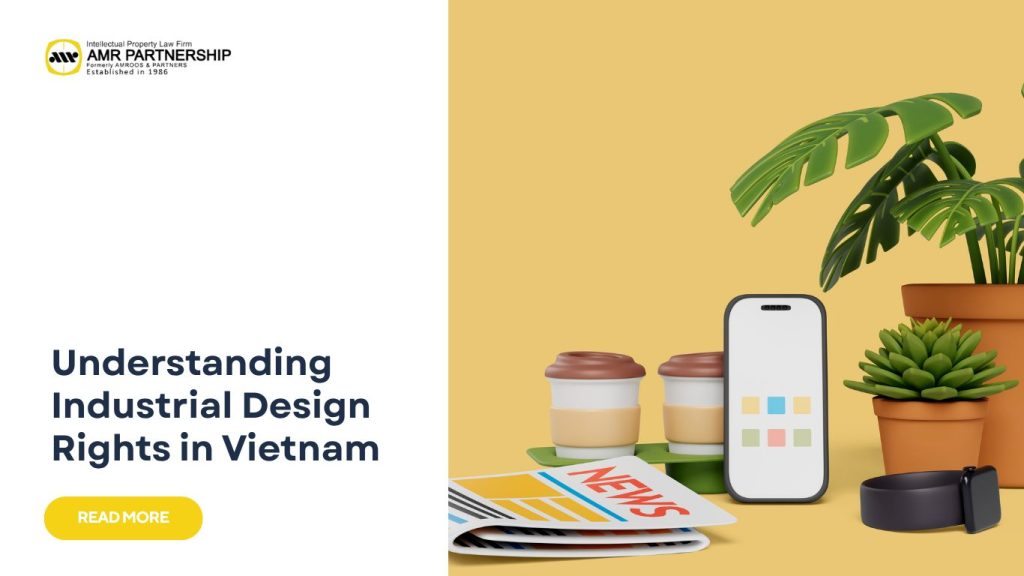
In today’s fast-paced global market, design isn’t just about how a product looks — it’s a critical business asset that shapes brand identity, user experience, and competitive advantage. Whether you’re in fashion, technology, packaging, or consumer goods, the uniqueness of your design can set you apart. However, without proper protection, that innovation can easily be copied or misused. This is where Industrial Design Rights become essential. For companies operating or investing in Vietnam, understanding and securing these rights through trusted legal partners like amr.co.id can be a game-changer.
READ MORE: How Industrial Design Intellectual Property Rights Empower Creative Businesses in Indonesia
Why Industrial Design Rights Matter for Modern Businesses
In the era of innovation, design defines the market. Beyond aesthetics, it represents your brand’s story and identity. Think of a smartphone with a unique curved edge or a beverage bottle with a distinctive silhouette — both are instantly recognizable not just for how they work, but for how they look.
The Growing Role of Design in Brand Identity
- Emotional connection, a distinct design makes your brand instantly recognizable.
- Business value, unique designs attract customer loyalty and premium pricing.
- Competitive edge, protecting your design legally ensures you maintain exclusivity.
The Global Awareness of IP Rights
More countries, including Vietnam, are emphasizing intellectual property (IP) protection. As part of the global trade ecosystem, Vietnam has updated its IP laws to align with international standards — crucial for investors and designers entering this growing market.
Vietnam’s Fast-Growing Market
Vietnam’s industrial and creative sectors have surged over the past decade. With an influx of manufacturing and product design, protecting visual innovation has become vital. From local startups to foreign corporations, securing Industrial Design Rights ensures that creative investments remain safe and profitable.
READ MORE: Current Trends in Intellectual Property Rights: Insights for Businesses
What Are Industrial Design Rights? (In Simple Terms)
Simply put, Industrial Design Rights protect the appearance of a product, not its function. It covers elements like shape, color, and pattern — basically, what makes a product visually unique.
Under Vietnam’s Law on Intellectual Property (2005, amended 2009, 2019, 2022), industrial designs refer to the external appearance of a product represented by lines, shapes, colors, or a combination thereof.
Key Points:
- Protects visual aspects, not technical features.
- Must be new, creative, and industrially applicable.
- Applies to both physical and digital product designs.
Example:
- The shape of a perfume bottle or a smartphone casing.
- The texture pattern on a fabric line.
- A uniquely designed chair that can be mass-produced.
Such designs become legally yours — meaning others can’t copy or sell lookalike products without permission.
READ MORE: How Intellectual Property Rights in Indonesia Support Innovation in the Food Industry
When Does a Design Qualify for Protection?
Vietnam’s law outlines clear requirements for a design to be protected. Let’s break them down in plain English:
1. Novelty
The design must be new — not previously disclosed anywhere in Vietnam or internationally. Before filing, it’s wise to conduct a prior art search to ensure originality.
2. Creative Step
The design must show creativity — not something obvious to designers or experts in the field.
3. Industrial Applicability
It must be possible to produce the design on an industrial scale — not just a one-off artistic creation.
Real Examples:
- A new bottle shape for a local beverage brand that’s different from existing models.
- An ergonomic chair with a unique curvature that can be mass-produced.
- A smartwatch body with a distinctive bezel or display frame.
If your product fits these criteria, it’s eligible for Industrial Design Rights in Vietnam.
How to Register Your Industrial Design in Vietnam
If you’re planning to protect your product’s design, the registration process in Vietnam is straightforward. Here’s how it works:
Step-by-Step Registration Process
- Prepare Your Documents
- Application form
- Design description and drawings (6 views recommended)
- Proof of payment for official fees
- Submit the Application
- To the Intellectual Property Office of Vietnam (IPVN)
- You can file online or in person.
- Examination Process
- Formality Examination: Within 1 month
- Publication: Around 2 months after acceptance
- Substantive Examination: Up to 7 months
- Receive Your Certificate
- Once approved, your design gains legal protection across Vietnam.
Pro Tip: You can register multiple variations of a design under one application. This saves time and cost while broadening protection.
READ MORE: Who Governs Intellectual Property Rights in Indonesia? Key Authorities, Regulations, and Their Roles
How Long Does Protection Last and What About Renewal?
The protection period for Industrial Design Rights in Vietnam is generous and manageable:
- 5 years from the filing date
- Renewable twice (maximum 15 years)
No annual maintenance fees are required — only renewals every five years. However, forgetting to renew means losing your exclusive rights, and the design becomes public property. Setting renewal reminders or working with IP professionals helps maintain continuous protection.
READ MORE: Where to Apply for Intellectual Property Rights in Indonesia? Step-by-Step Registration Guide
What Does It Cost? (In Perspective)
Registering a design in Vietnam is relatively affordable:
- The official filing fee is approximately VND 1.7 million (around US$65).
Compared to many ASEAN countries, this makes Vietnam cost-effective for startups, SMEs, and multinational investors alike. Renewal fees are also low, ensuring long-term accessibility for businesses of all sizes.
For tailored guidance and pricing based on your portfolio, it’s best to consult directly with AMR’s IP experts via WhatsApp for an exact quotation.
READ MORE: What Are the Seven Types of Intellectual Property Rights? A Full Breakdown
Who Oversees Industrial Design Rights in Vietnam?
The Intellectual Property Office of Vietnam (IPVN) manages all matters related to design protection.
Their responsibilities include:
- Reviewing and granting design registrations.
- Publishing accepted applications.
- Handling oppositions or disputes.
The IPVN operates under the Ministry of Science and Technology (MOST) and aligns its procedures with international frameworks such as the Hague Agreement and CPTPP, simplifying global filings for foreign applicants.
READ MORE: Who Owns the Rights to Intellectual Property in Collaborative Works?
What Happens If Someone Copies Your Design?
If another party uses or imitates your protected design without permission, Vietnam provides multiple enforcement routes:
Enforcement Channels:
- Administrative actions, file complaints through IP inspectors or market authorities.
- Civil lawsuits, claim compensation through court proceedings.
- Customs intervention, block counterfeit or infringing goods at borders.
While enforcement can take time, legal professionals can assist in monitoring markets, sending cease-and-desist letters, or preparing litigation strategies. Having a legal team ensures faster resolution and better outcomes.
READ MORE: Who Owns Intellectual Property Rights? A Breakdown for Creators and Companies
Tips for Businesses and Investors
Whether you’re a startup, designer, or global brand, the following tips can strengthen your protection strategy:
- File early. Vietnam uses a first-to-file system — whoever registers first owns the rights.
- Conduct prior searches. Avoid conflicts and rejections by verifying novelty.
- Register design variants. Save time and cover multiple looks of the same product.
- Assign or license rights properly. Especially if entering joint ventures or outsourcing manufacturing.
- Monitor the market. Regular checks prevent unauthorized use or imitation.
By taking these proactive steps, businesses can minimize legal risks and fully leverage their creative assets.
READ MORE: How Much Does It Cost to Register Intellectual Property Rights in Indonesia? Fees, Process, and Tips
Protecting Creativity in a Fast-Growing Market
Vietnam’s design and manufacturing landscape is evolving rapidly. Protecting your innovations with Industrial Design Rights is more than compliance — it’s a competitive advantage.
Partnering with experienced IP professionals like amr.co.id ensures your creative assets remain secure, enforceable, and profitable. From registration to enforcement, AMR’s legal experts can handle every stage efficiently across ASEAN jurisdictions.
- Phone (Hunting): +62-21-29036668
- Fax: +62-21-29036672 to 75
- WhatsApp Customer Service: Click here to chat
- Instagram: @amrpartnership
- TikTok: @amr.partnership
- Facebook: Law Firm AMR Partnership
- Official Website: www.amr.co.id






